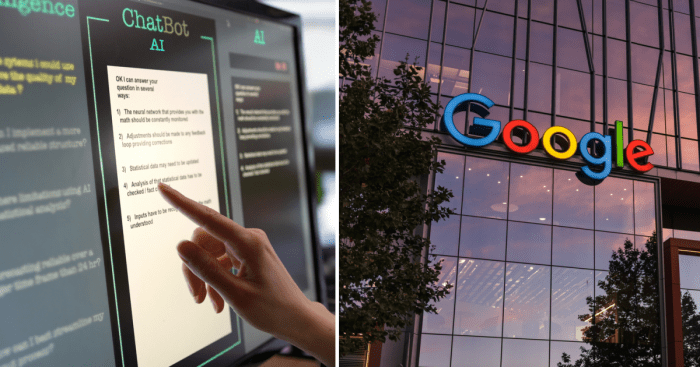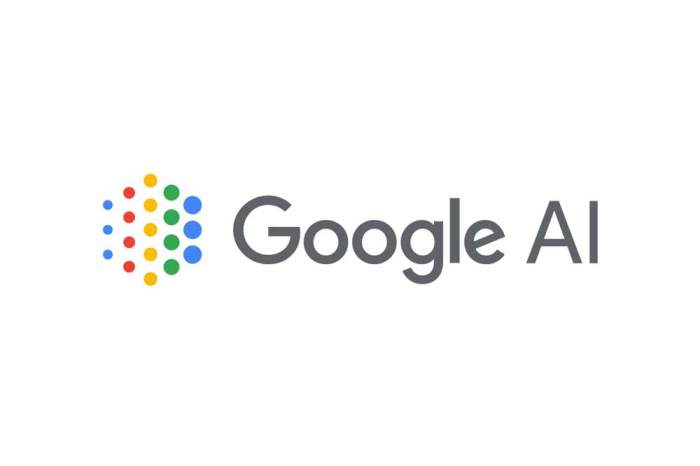Google’s History with AI and Conversational Interfaces
Google’s journey with artificial intelligence (AI) and conversational interfaces is a fascinating story of innovation and evolution. From early ventures into search and machine learning to the development of cutting-edge language models and voice assistants, Google has been a pioneer in the field of AI. This history provides valuable insights into the company’s current interest in chatbots and the potential of this technology to revolutionize how we interact with computers.
Early Ventures in AI and Conversational Interfaces
Google’s foray into AI began in the early days of the company with the development of its search engine. The core of Google’s search algorithm relied on sophisticated AI techniques to analyze and understand the vast amount of data on the web. This early success in search laid the foundation for Google’s future endeavors in AI.
- Google Search: The company’s core product, Google Search, has been a driving force behind the development of AI technologies. The search engine uses machine learning algorithms to understand the meaning of search queries and deliver relevant results. This technology has evolved significantly over the years, becoming more sophisticated and capable of understanding complex language and intent.
- Google Translate: Another early venture into AI, Google Translate, utilizes machine learning to translate text between different languages. This service has become an indispensable tool for communication and understanding across language barriers, demonstrating the power of AI to bridge cultural gaps.
Evolution of Google’s AI Technology
Over the years, Google has continued to invest heavily in AI research and development, leading to advancements in various areas, including machine learning, natural language processing, and computer vision. These advancements have been integrated into various Google products and services, enhancing user experience and opening up new possibilities.
- Google Assistant: Launched in 2016, Google Assistant is a voice-activated virtual assistant that utilizes natural language processing to understand and respond to user queries. It can perform various tasks, including setting reminders, playing music, and providing information. Google Assistant is a prime example of how Google has leveraged its AI expertise to create a conversational interface that is both intuitive and powerful.
- Google Photos: Google Photos uses AI to automatically organize and tag photos based on the objects and people they contain. The technology also enables features like face recognition and photo enhancement, making it easier for users to manage and enjoy their photo collections.
Google’s Current Chatbot Initiatives: Google Wants To Create Chatbots
Google, the tech giant known for its search engine and innovative technologies, has been actively involved in the development of conversational AI, particularly chatbots. These chatbots are designed to interact with users in a natural and human-like manner, providing information, assistance, and entertainment.
Google’s Chatbot Projects
Google has several ongoing chatbot projects, each with its unique purpose and capabilities. These projects demonstrate Google’s commitment to advancing conversational AI and its potential applications across various domains.
- LaMDA (Language Model for Dialogue Applications): LaMDA is a cutting-edge conversational AI model developed by Google AI. It’s designed to engage in open-ended, natural conversations, generating human-like responses. LaMDA is trained on a massive dataset of text and code, enabling it to understand and respond to a wide range of prompts and questions.
- Bard: Bard is Google’s experimental conversational AI service, powered by LaMDA. It’s designed to provide informative and creative responses to user queries, leveraging Google’s vast knowledge base. Bard is still under development, but it’s already capable of generating different creative text formats, like poems, code, scripts, musical pieces, email, letters, etc., based on user input.
- Google Assistant: Google Assistant is a virtual assistant available on various Google devices and platforms. It can perform tasks like setting reminders, playing music, making calls, and answering questions. Google Assistant is constantly evolving, incorporating new features and capabilities to enhance user experience.
- Duplex: Duplex is a Google AI technology that enables automated phone calls for tasks like booking appointments or making reservations. Duplex uses natural language processing (NLP) to understand and respond to human speech, mimicking human conversation patterns.
The Potential Impact of Google’s Chatbots
Google’s foray into the world of chatbots has the potential to reshape various industries and sectors, bringing about a wave of innovation and efficiency. These intelligent conversational agents, powered by Google’s vast AI capabilities, promise to revolutionize the way we interact with technology and access information.
Impact on Customer Service
The widespread adoption of Google’s chatbots could significantly transform customer service, making it more accessible, efficient, and personalized. Chatbots can handle a large volume of inquiries simultaneously, freeing up human agents to focus on more complex issues.
- 24/7 Availability: Chatbots can provide instant support around the clock, eliminating the limitations of traditional customer service hours.
- Personalized Interactions: By leveraging user data, chatbots can tailor their responses to individual needs, creating a more personalized experience.
- Reduced Wait Times: Chatbots can instantly address simple queries, reducing wait times and improving customer satisfaction.
Google’s Competitive Landscape in the Chatbot Market
The chatbot market is a crowded space with numerous players vying for dominance. Google, with its vast resources and expertise in artificial intelligence (AI), is a major contender in this landscape. Understanding Google’s competitive position requires analyzing its key competitors, comparing its offerings, and evaluating its strengths and weaknesses.
Key Competitors in the Chatbot Market
Google faces stiff competition from a variety of companies, each with its unique strengths and strategies. Some of Google’s key competitors in the chatbot market include:
- Microsoft: Microsoft is a formidable competitor with its Azure Bot Service and its focus on enterprise solutions. Microsoft’s strong presence in the enterprise market, coupled with its robust AI capabilities, makes it a significant player in the chatbot space.
- Amazon: Amazon’s Alexa platform is a major force in the consumer chatbot market. With its extensive user base and integration with Amazon’s ecosystem, Alexa provides a compelling alternative to Google Assistant.
- Facebook: Facebook’s Messenger platform has become a popular channel for chatbots, particularly for businesses seeking to engage with customers. Facebook’s vast user base and its focus on conversational commerce make it a significant player in the chatbot market.
- IBM: IBM’s Watson Assistant is a powerful chatbot platform that focuses on enterprise solutions. Watson Assistant’s advanced AI capabilities and its focus on customer service make it a strong contender in the chatbot market.
Comparison of Google’s Chatbot Offerings with Competitors
Google’s chatbot offerings, primarily Google Assistant, compete with other platforms in terms of functionality, user experience, and integration with other services.
- Functionality: Google Assistant offers a wide range of functionalities, including voice control, natural language processing, and integration with various services. While comparable to competitors like Alexa and Siri, Google Assistant distinguishes itself by leveraging Google’s vast data and AI capabilities. For instance, Google Assistant’s ability to access and process information from Google Search gives it an edge in providing comprehensive and accurate responses.
- User Experience: Google Assistant prioritizes a user-friendly experience with a focus on natural language interaction and personalized responses. However, competitors like Amazon Alexa have a more established presence in the smart home market, with a broader range of compatible devices.
- Integration: Google Assistant seamlessly integrates with Google’s ecosystem, including Gmail, Maps, and Calendar, providing a cohesive user experience. While competitors like Microsoft’s Cortana also offer integration with their respective ecosystems, Google’s broader ecosystem offers a wider range of potential applications.
Strengths and Weaknesses of Google’s Position
Google’s position in the chatbot market is characterized by both strengths and weaknesses:
- Strengths:
- Strong AI Capabilities: Google’s expertise in AI, coupled with its vast data resources, provides a significant advantage in developing advanced chatbots with sophisticated natural language processing capabilities.
- Extensive Ecosystem: Google’s extensive ecosystem of services, including Search, Maps, and Gmail, provides a platform for seamless integration and a wider range of potential applications for chatbots.
- Global Reach: Google’s global reach and vast user base provide a significant advantage in scaling chatbot adoption.
- Weaknesses:
- Competition from Established Players: Google faces competition from established players like Amazon and Microsoft, each with a strong presence in the chatbot market.
- Privacy Concerns: Google’s data collection practices have raised privacy concerns, which could hinder chatbot adoption among users who are wary of sharing personal information.
The Future of Google’s Chatbot Strategy
Google’s chatbot strategy is poised for significant growth and innovation, driven by the company’s deep expertise in artificial intelligence (AI) and its commitment to enhancing user experiences. Google’s future plans will likely involve a multi-pronged approach, focusing on refining existing chatbot technologies, exploring new applications, and expanding its reach across diverse industries.
Advancements in Chatbot Technology, Google wants to create chatbots
Google’s future chatbot strategy will likely focus on improving the capabilities of its current conversational AI models. These advancements will involve refining the models’ ability to understand natural language, generate human-like responses, and adapt to different contexts and user preferences.
- Enhanced Natural Language Processing (NLP): Google will continue to invest in NLP research to enable its chatbots to understand complex language nuances, including sarcasm, humor, and idiomatic expressions. This will result in more natural and engaging conversations.
- Contextual Awareness: Google’s chatbots will become more contextually aware, remembering past interactions and using this information to tailor responses. This will allow for more personalized and relevant conversations.
- Multimodal Capabilities: Google’s chatbots will likely integrate with other technologies, such as image recognition and voice synthesis, to provide a more immersive and interactive experience. This will enable chatbots to understand and respond to a wider range of inputs, including images, videos, and audio.
Google wants to create chatbots – The rise of Google’s chatbots marks a significant shift in the tech landscape. As these AI-powered assistants become more sophisticated and integrated into our lives, they have the potential to transform how we access information, communicate with businesses, and even manage our daily routines. Google’s ambition to create chatbots that are both intelligent and engaging is a testament to the company’s commitment to pushing the boundaries of what’s possible with technology. While there are still challenges to overcome, the future of conversation is looking increasingly bright, and Google is at the forefront of this exciting evolution.
Google’s ambitious plan to create chatbots that can hold natural conversations is a hot topic, and it’s got everyone wondering what the future of communication will look like. While we’re all waiting to see how those chatbots will sound, HP has already partnered with Bang & Olufsen to bring high-quality audio to its devices, proving that the future of sound is already here.
It’ll be interesting to see if Google’s chatbots will be able to match the immersive sound quality of Bang & Olufsen’s speakers!
 Standi Techno News
Standi Techno News

